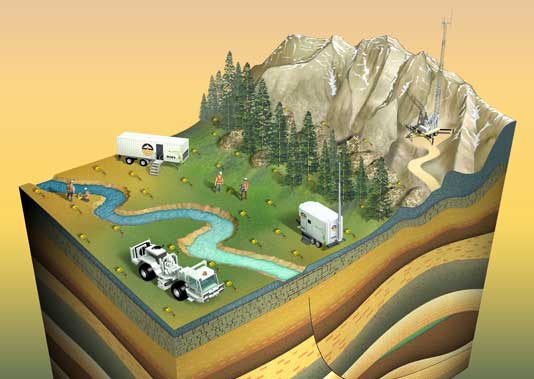LTE Direct, now being standardized in 3GPP as part of Release 12, is a platform for directly discovering and connecting nearby peers. Qualcomm and Samsung sponsored an LTE Direct workshop earlier this year in which several major operators participated. A few days ago Qualcomm made available a white paper, prepared jointly by some of the participants, that summarizes key points from the workshop.
Archive for the ‘Location’ Category
Positioning LTE Direct against other proximity-aware technologies
Saturday, August 24th, 2013Ultra-Wideband: How Regulatory and Standardization Delays Slowed a Wireless Technology
Thursday, September 2nd, 2010The FCC recently issued an order denying reconsideration petitions in its ultra-wideband (UWB) proceeding. That effectively ends the 12-year UWB rulemaking process. Mitchell Lazarus recounts how UWB became bogged down at the FCC and in a failed standardization attempt in IEEE 802.
UWB, as authorized by the FCC, operates across 3.1 to 10.6 GHz, with very low power at any one frequency; its tendency to cause or receive interference is very low.
IEEE 802 attempted to create a UWB standard in IEEE 802.15.3a but did not, as neither of two competing proposals reached the necessary voting threshold for approval. One of the competing proposals, Multi-band Orthogonal Frequency Division Multiplexing (MB-OFDM), has since seen some consumer success in Wireless USB, which is based on a platform maintained by the WiMedia Alliance; data rates are up to 480 Mbps at a range of about 10 feet.
UWB was eventually standardized in IEEE 802.15.4a, where it exists as an alternative physical-layer to standard IEEE 802.15.4-2006, a standard for very low power, low data rate devices. (The IEEE 802.15.3 family is for higher data rates with higher power consumption.) It uses what was the other competing proposal in 802.15.3a, Direct Sequence UWB (DS-UWB). This standardized form of UWB has been commercialized for asset tracking and other location services, but not yet for consumer applications.
(more…)
Google patent application: Estimating wireless device location using measured data rates
Monday, February 1st, 2010Location-based services are reaching beyond navigation and E911. Social networking, advertising, and other emerging applications are driving research and development into better technologies in support of these services, starting with the location estimation process itself.
Today, there are several ways to determine the location of a wireless device in a network. As a rough estimate, the device knows the identification of the base station or access point with which it is associated. That’s a start, but a base station can cover a wide area. To refine that, devices can use GPS. Networks of cellular base stations can measure differences in the timing or signal strength of an uplink signal, and use the results to estimate location. MAC addresses of Wi-Fi access points can be sniffed and mapped by roving monitors. Sometimes, two or more of these techniques are used in concert.
(more…)

